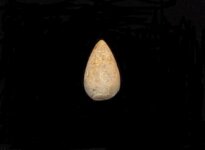castletonking
Full Member
hey whats up? These are a few of the lead balls I've found on my property,about 1/4 mile from the Revolution era(1 day before the battle of Hubbardton) Castleton skirmish here in Castleton Vt.no idea if they are from that era or not.the sizes range from marble size to a little larger than a pea..also i have no idea what the piece pictured above them is.the flattened are on the right in the picture is perfect to fit a thumb and the little piece sticking up is a pin of some sort.Also i have pictured 2 of the many many spoon bowls also found on my property,any idea of age? i believe they are pewter,I also find pewter buttons as well here.(picture isnt great,but it appears to be a scalloped pattern on both bowls near where the handle was attached. thanks for any info you can provide on these items.








